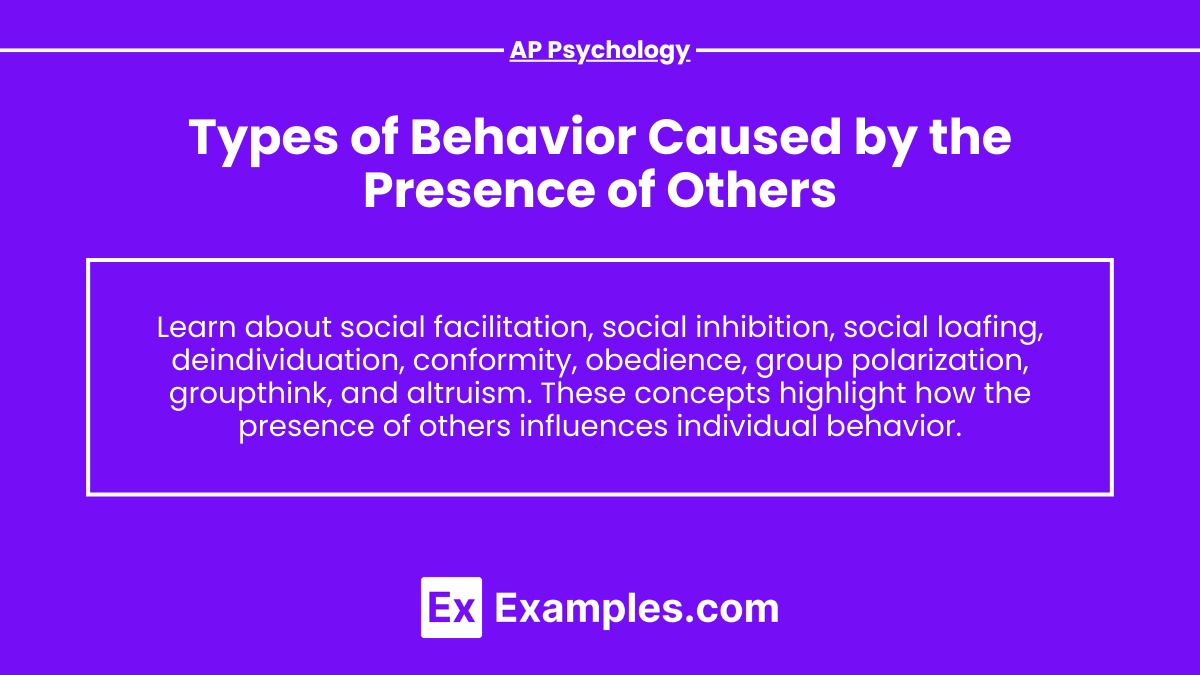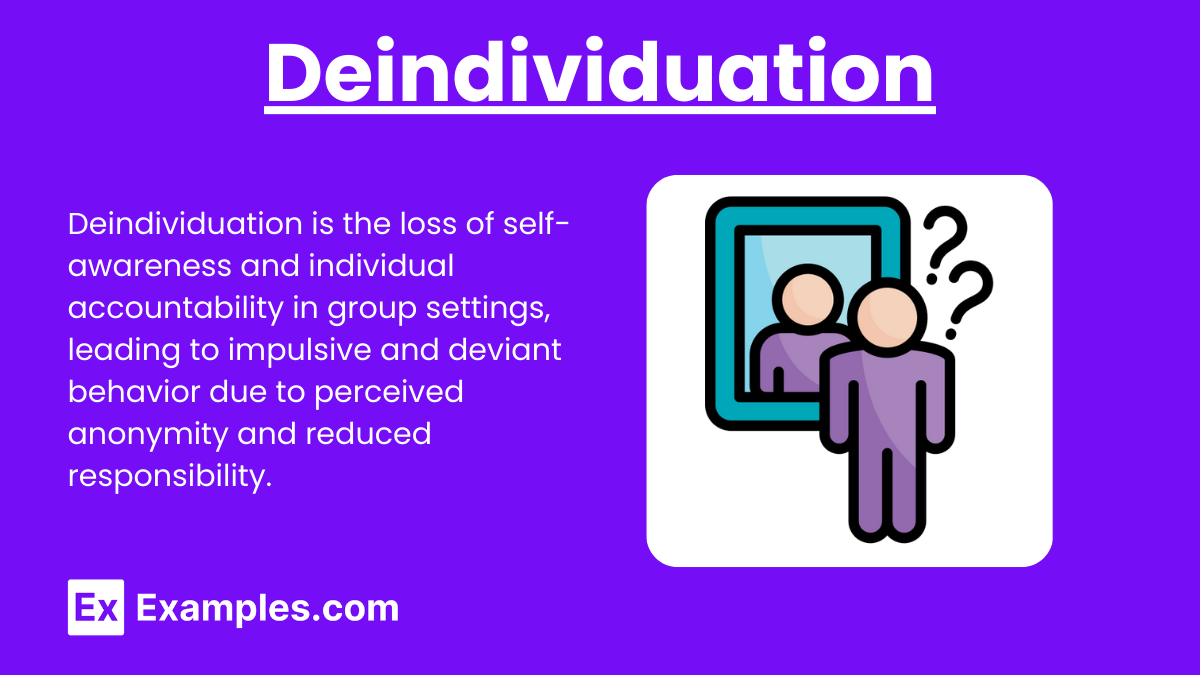Learn how the presence of others affects behavior is crucial. AP Psychology examines various behaviors influenced by others, such as social facilitation, social inhibition, social loafing, deindividuation, conformity, obedience, group polarization, and groupthink. These behaviors highlight how individuals may perform differently, conform, or make decisions based on group dynamics and social influences. Grasping these concepts is essential for analyzing human interactions and the psychological mechanisms underlying social behavior.
Learning Objectives
Learn how the presence of others influences individual behavior. Understand key concepts such as social facilitation, social inhibition, social loafing, deindividuation, conformity, obedience, group polarization, groupthink, and altruism. Focus on definitions, underlying theories, and classic experiments (e.g., Asch's conformity experiments, Milgram's obedience study). Be able to identify real-life examples and explain the psychological mechanisms driving these behaviors. Mastering these objectives will help you analyze and apply social psychology principles effectively.
1. Social Facilitation
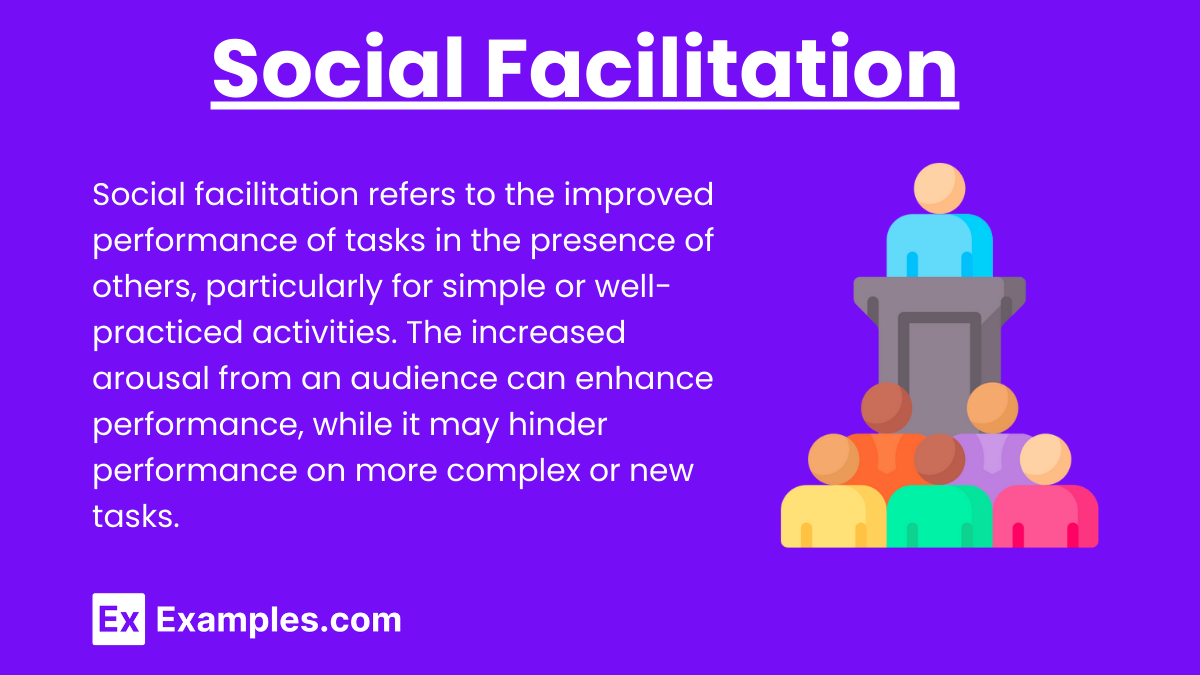
Social facilitation refers to the tendency for people to perform tasks better when they are in the presence of others.
Key Points:
Simple vs. Complex Tasks: Performance on simple or well-practiced tasks tends to improve in the presence of others, while performance on complex or new tasks can worsen.
Arousal Theory: The presence of others increases physiological arousal, which enhances the ability to perform simple tasks but can hinder complex task performance.
Examples:
A cyclist riding faster when racing against others compared to riding alone.
An experienced musician performing better in front of an audience compared to practicing alone.
2. Social Inhibition
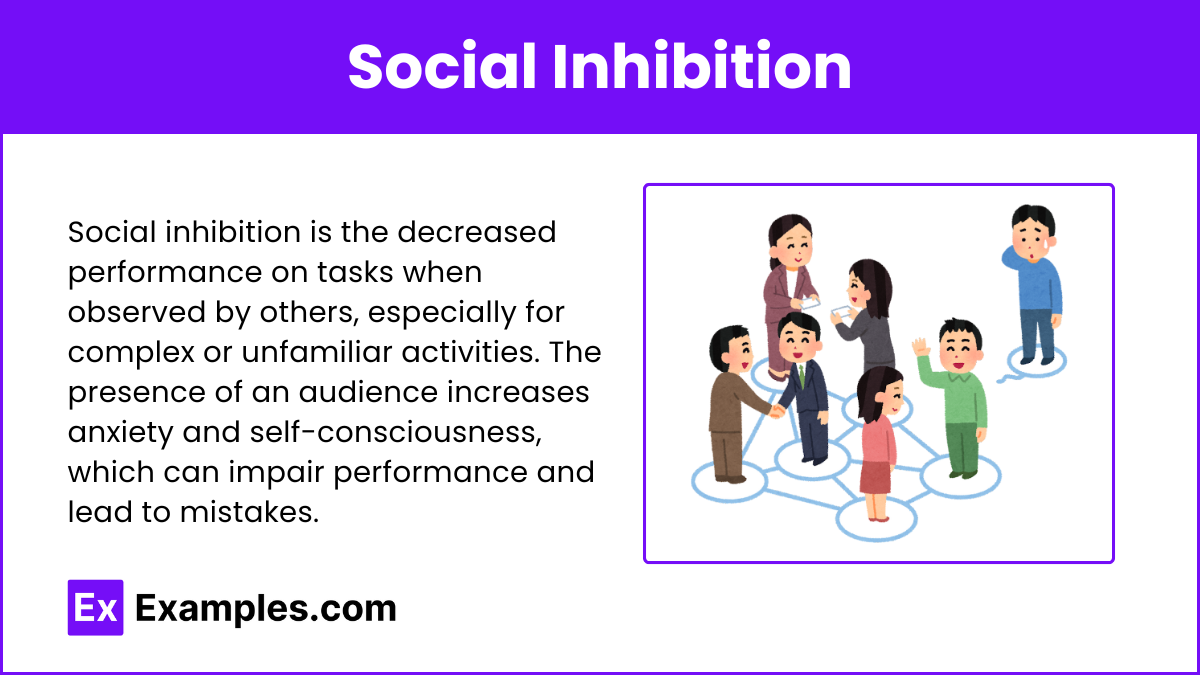
Social inhibition is the tendency to perform worse on a task when it is being observed by others, especially if the task is difficult or not well-learned.
Key Points:
Opposite of social facilitation.
High arousal in the presence of others can impair performance on complex tasks.
Examples:
A novice dancer making more mistakes during a public performance compared to practicing privately.
A student struggling to solve a difficult math problem while being watched by peers.
3. Social Loafing

Social loafing is the phenomenon where individuals exert less effort when working in a group compared to when working alone.
Key Points:
Occurs because individuals feel less accountable in a group setting.
More common in tasks where individual contributions are not easily identifiable.
Examples:
Group projects where some members contribute less effort than if they were working individually.
Team sports where some players put in less effort because they believe others will cover for them.
4. Deindividuation
Deindividuation is a psychological state where individuals in a group lose self-awareness and self-restraint, often leading to behaviors they would not normally engage in alone.
Key Points:
Often occurs in large crowds or groups where anonymity is present.
Can lead to impulsive and deviant behaviors.
Examples:
Rioting and looting during a protest where individuals feel anonymous.
Cyberbullying in online forums where individuals feel they can hide behind a screen.
5. Conformity
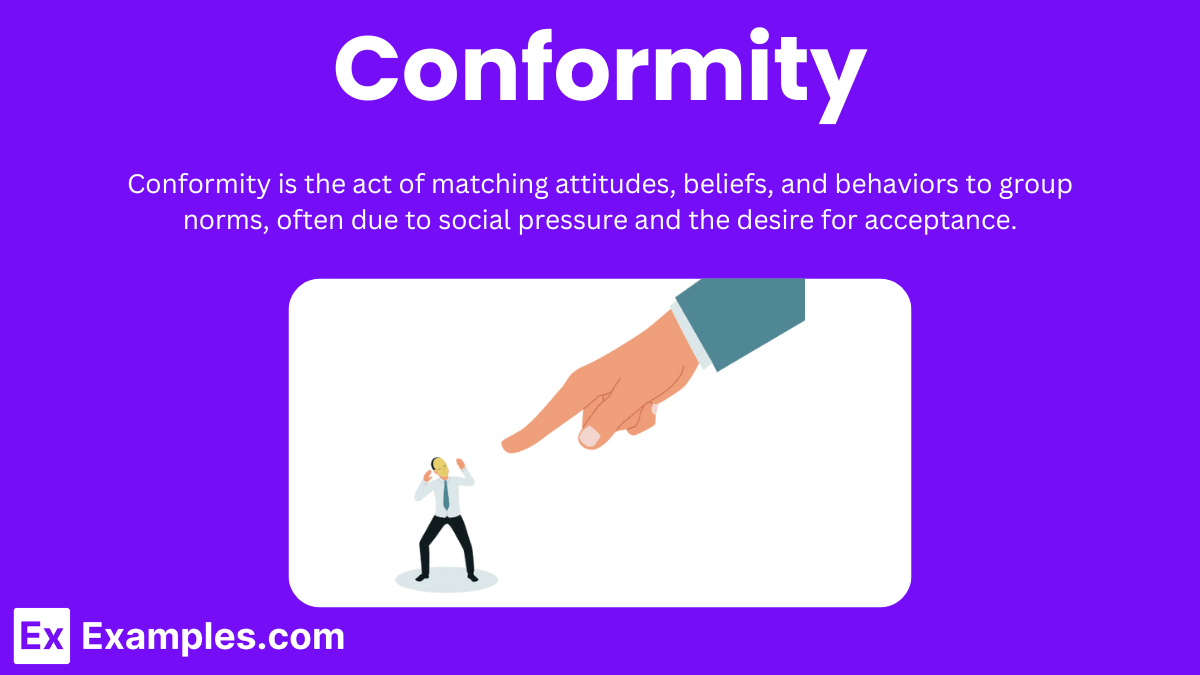
Conformity is the act of matching attitudes, beliefs, and behaviors to group norms.
Key Points:
Influenced by the desire to fit in (normative influence) and the desire to be correct (informational influence).
Solomon Asch’s conformity experiments demonstrated the power of conformity in group settings.
Examples:
Agreeing with the majority opinion in a group discussion even if you have a different view.
Dressing similarly to peers to fit in with a social group.
6. Obedience
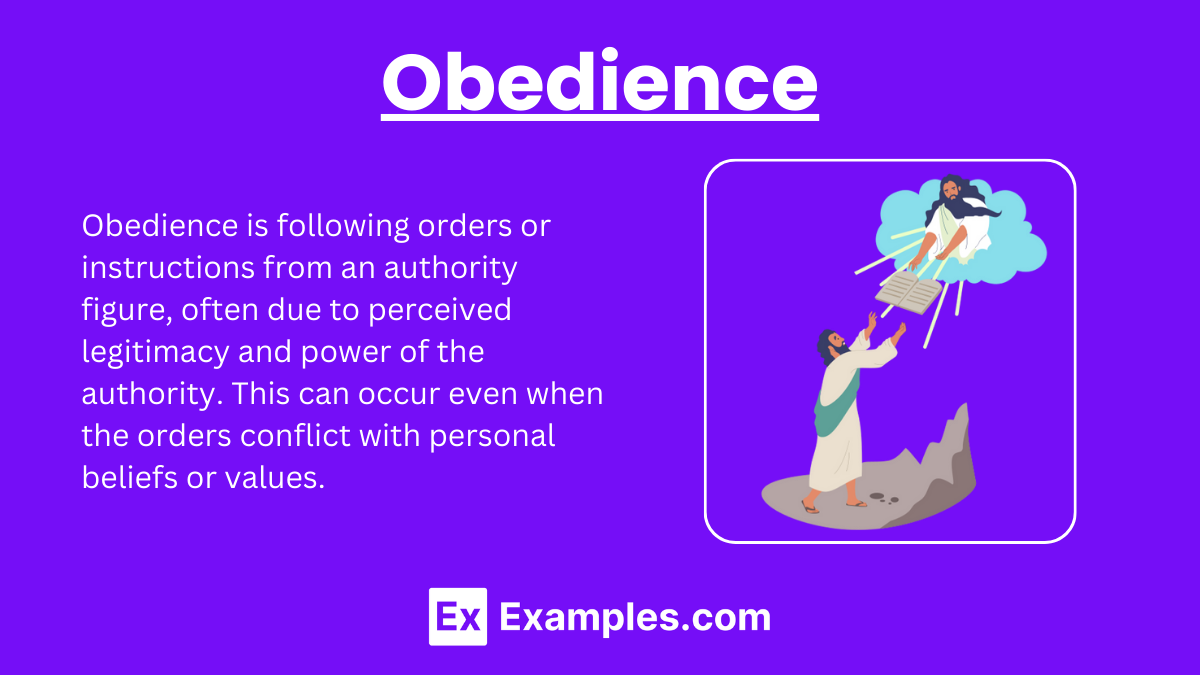
Obedience is the act of following orders or instructions from an authority figure.
Key Points:
Stanley Milgram’s obedience experiments highlighted how far people are willing to go in obeying authority.
Often involves a hierarchical relationship where the individual feels compelled to follow orders.
Examples:
Soldiers following orders from their superior officers, even if they involve morally questionable actions.
Employees adhering to directives from their bosses, even when they disagree with them.
7. Group Polarization

Group polarization refers to the tendency for group discussion to enhance the group’s initial leanings, making their opinions more extreme.
Key Points:
Occurs because individuals are exposed to new arguments supporting their initial views.
Can lead to more extreme positions and decisions.
Examples:
Political discussions among like-minded individuals leading to more radical political views.
Business meetings where group consensus becomes more aggressive or risk-taking after discussion.
8. Groupthink
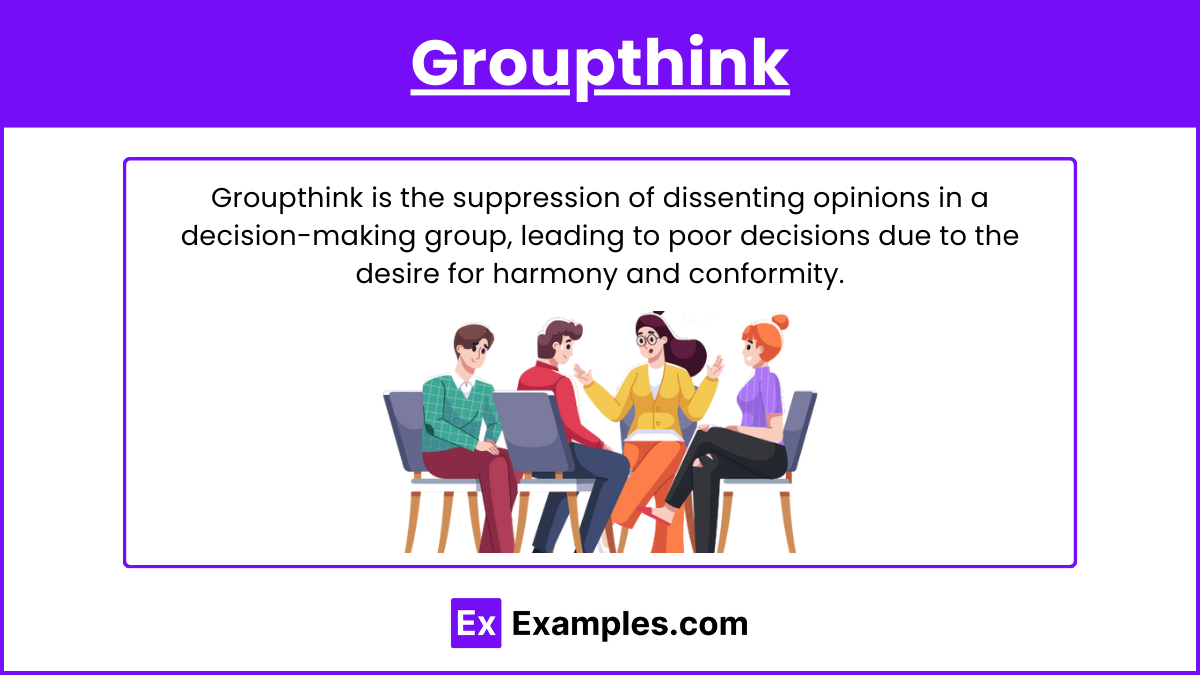
Groupthink is a phenomenon where the desire for harmony in a Decision Criteria group overrides realistic Self-Appraisal of alternatives.
Key Points:
Leads to poor decision-making as dissenting opinions are suppressed.
Irving Janis identified groupthink as a major cause of flawed decisions.
Examples:
The Bay of Pigs invasion, where U.S. officials made poor decisions due to groupthink.
Corporate boardrooms making unanimous decisions without critical Evaluation Report of potential risks.
9. Altruism

Altruism refers to selfless behavior intended to benefit others without expecting anything in return.
Key Points:
Influenced by empathy, social norms, and the presence of others.
The bystander effect can reduce the likelihood of altruistic behavior in emergencies.
Examples:
Helping a stranger in need without expecting a reward.
Donating to charity anonymously.

